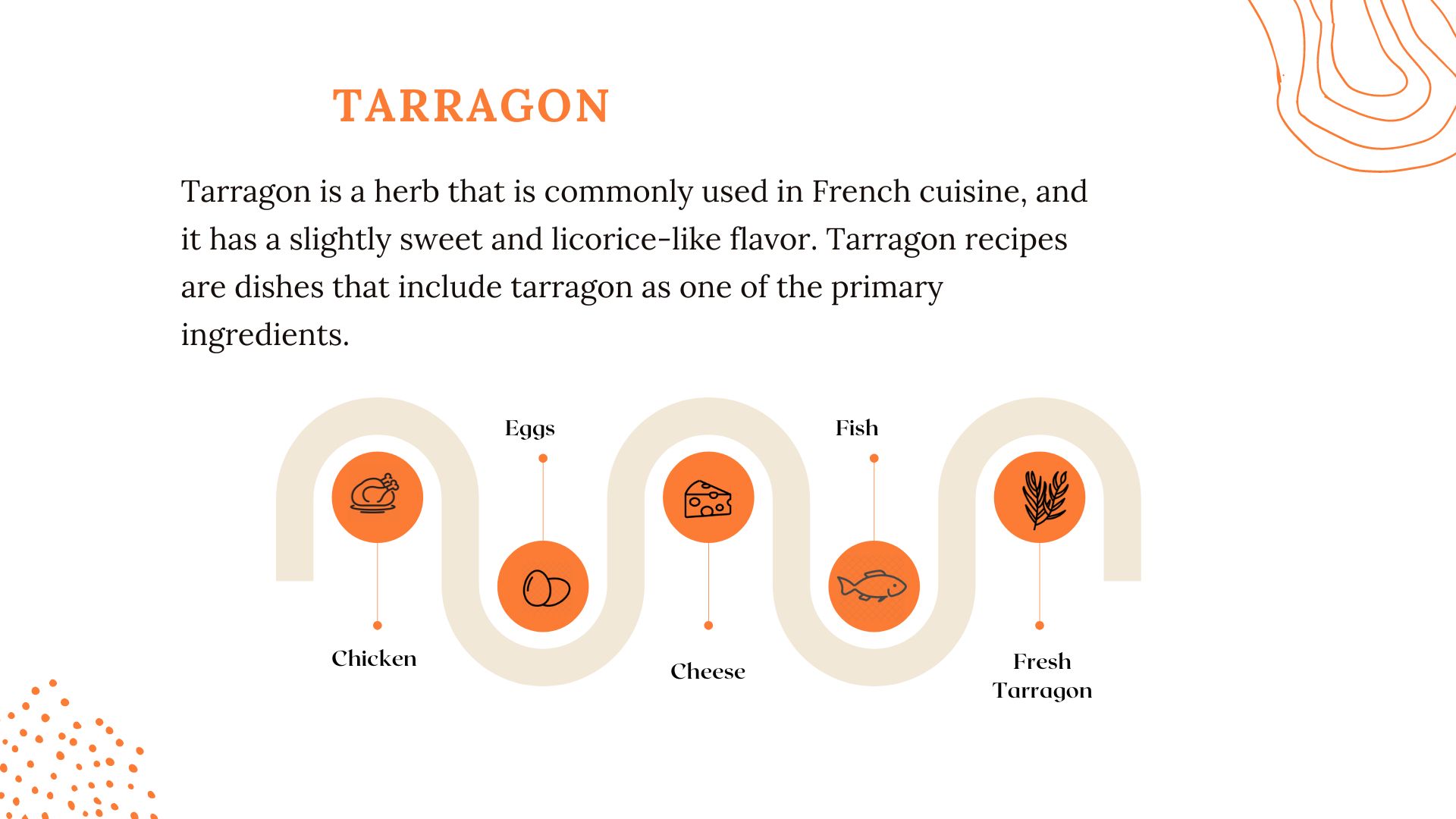Introduction
Tarragon is an extremely aromatic, green, leafy herb with a subtle licorice taste. It is frequently used in French cooking and provides a light spring flavor and a touch of elegance to various meals.
Including sauces, salad dressings, and fish and poultry dishes. It is dried and fresh and is readily available all year.
It is an herb for cooking and is well-known for its glossy, thin leaves and aromatic taste. The most popular type of this herb used to cook is one of the French varieties.
It is a key ingredient in numerous French recipes, such as Bearnaise sauce. Due to its delicate flavor, it is also used with chicken, fish, and eggs.
In France, it is known as “the king of herbs” because of its ability to enhance a dish and is among the four herbs used in the French blend of fine herbs, which is a blend of parsley, Tarragon, chervil, and chives.
It is considered a perennial plant, meaning that it will come over the next year once it’s established.
Cooking With Tarragon
Dried and fresh Tarragon is utilized in different ways in recipes. When cooking with fresh leaves, the leaves must be washed and dried before use.
- They are then removed from the stem, which can be done simply by running your fingers along the stem from the top down.
- The leaves can be used whole or chopped but be careful as they bruise easily.
- Fresh Tarragon should be used raw or added toward the end of cooking. The flavor will turn bitter if left to cook for a long time.
- Dried Tarragon is added early in recipes, but will create a different effect than fresh due to its diminished flavor.
Tarragon Recipes
It is a key ingredient on the list of French spring dishes made with eggs, fish, chicken, cheese, and Eastern European and Russian dishes. Adding it to a recipe will enhance the taste.
- Tarragon Chocolate Brown Walnut Sauce is used for fish.
- Creamy Tarragon Sauce.
- Tarragon Chicken Salad.
Substitutions
You may use a few substitutes if your recipe calls for fresh herbs and you don’t have any, but the final result will differ.
- For every tablespoon of fresh Tarragon recommended, substitute chervil or fennel fronds, or a pinch of anise or fennel seed, if the licorice flavor is important.
- Swap the herb one for one with basil, dill, or marjoram if you need another fresh herb. They won’t give the licorice flavor that it is famous for, but they’ll still work fairly well in whatever you’re preparing.
- Dried fine herbs, anise, or fennel seed can be used as a substitute for dried Tarragon.
It May Increase Appetite by Reducing Levels of Leptin
Age, sadness, or chemotherapy is just a few causes of appetite loss. It can result in malnutrition and a lower quality of life if untreated.
A decrease in appetite may also result from an imbalance in the hormones ghrelin and leptin. For the balance of energy, these hormones are crucial.
Leptin is known as a satiety hormone, whereas ghrelin is regarded as a hunger hormone. An increase in ghrelin levels brings on hunger. On the other hand, increasing leptin levels make you feel full.
In one study, researchers examined how this extract affected mice’s appetites. The results revealed increased body weight and decreased insulin and leptin production.
This result suggests that its extract might help in enhancing hunger. Results, however, were only found when combined with a high-fat diet. To confirm these results in humans, more study is required.
Where to Purchase Tarragon?
Most supermarkets have dried Tarragon in their spice aisle, and many big shops sell it online.
- While fresh Tarragon is less common than other herbs like parsley, chives, dill, and cilantro, it could be a little more difficult to find.
- If it’s available in supermarkets, it will be in the produce area, packaged in clamshells or bunches.
You might also see it at your neighborhood farmer’s market during the spring and early summer. You can also buy potted herb plants online or at gardening supply stores; keep the pot in a bright area and give it regular watering.
FAQs
Is Tarragon Easy to Grow?
Mild European climates are the native home of Tarragon. In a sunny or somewhat shaded location with well-drained soil, it is hardy and simple to grow.
It does well in spring regions and suffers in very hot ones. It produces leaves with a rich flavor and requires a sunny, warm, and protected location to grow.
French Tarragon, in the example, benefits from a well-drained soil and thrives on light, sandy, low-nutrient soils. It hates being wet, and too much rich soil can make it straggly and more prone to death.
How Long Does Tarragon Plant Last?
After thoroughly moistening the soil, sprinkle it with a light layer of granular general feed. French tarragon plants, in particular, have a short life. They should be productive for at least three to four years before needing to be replaced.



